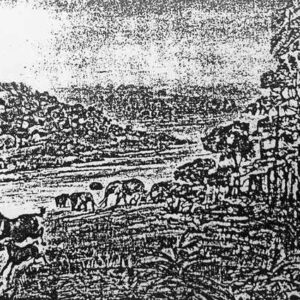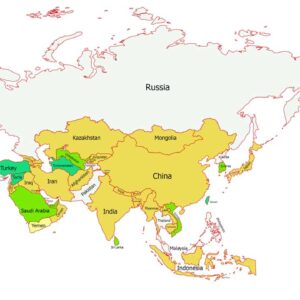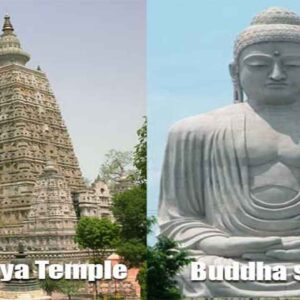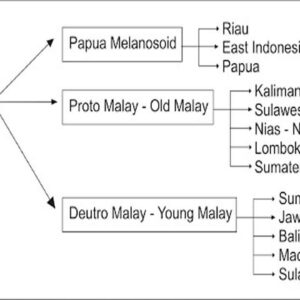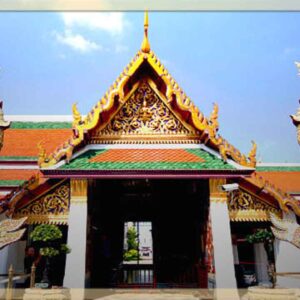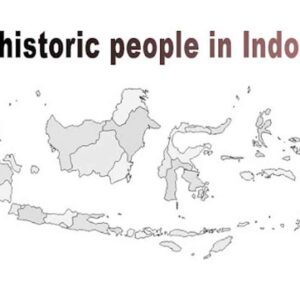The Kediri Kingdom or Kadhiri kingdom appeared after the split of power by Airlangga. The purpose of the splitting was to prevent Mapanji Garasakan (second child of Airlangga) and Samarawijaya (son of Dharmawangsa) from continuously conflicting with each other.
The power splitting was conducted by Empu Bharada. The Kingdom was divided into two, Jenggala and Panjalu. Panjalu KIngdom then moved its capital from Daha to Kediri. After that, Panjalu Kingdom was better known as the Kediri Kingdom.
During the reign of King Samarawijaya which began in 1041 AD, Janggala and Panjalu (Kediri) coexisted peacefully. A dispute over power kept going on between the two until Mapanji Garasakan (king of Jenggala) managed to defeat Samarawijaya in 1052 AD.
Mapanji Garasakan did not lead the kingdom for a long time. The head of government then fell on Mapanji Alanjung Ahyes, then on Samarothasa. When Samarathosa was in power, a dispute of power arose again between Janggala and Panjalu. It was not known who won the war. Yet in 1116 AD. The Kediri Kingdom was reigned by Bameswara. The successor of Bameswara was Jayabhaya (1135 – 1157).
When Jayabaya ws in power, the conflict with Janggala was still going on. Finally, Jayabaya managed to defeat Janggala. To honour the victory, Empu Kanwa and Empu Panuluh wrote the Bharatayudha Verses.
Kediri Kingdom reached its peak of glory during the reign of Jayabaya (1135 – 1157 AD) When Jayabaya was in power, the dispute with Kediri ended after he defeated the kingdom.
After Jayabaya, Kediri was consecutively ruled by Sarweswara, Aryeswara, Koncaryyadipa, Kameswara, and Kertajaya.
Kertajaya was the last king of Kediri. During his reign, a dispute arose between him and the Brahmanas. The dispute arose because Kertajaya was regarded as having broken the custom because he had forced the Brahmanas to worship him as a god.
The Brahmanas then sought asylum from Ken Arok. In 1222 AD, a battle broke out between Ken Arok’s troops and Kertajaya’s troops in Ganter. The battle was won by Ken Arok, so the Kediri Kingdom collapsed. Since then, a new kingdom had emerged, it was Singasari.
Culture in Kediri Kingdom era
The area of Kediri Kingdom was famous for its literary works. One interesting thing which appeared in that period was that in approximately 1200 AD, the native culture revived, whereas of Hindu influence from India.
In that century, Islam had also developed in India, so many of the Indian merchants who came to Indonesia had professed Islam.
- The following are signals of the revical culture of Indonesia :
- In the stories of puppet show, figures of Punakawan (servants of royalty) appeared, for example in the story of Gatot Kaca Sraya which was written by Empu Panuluh.
- Scholars believed that the servants of royalty were genuine Indonesian figures. Their figures were extraordinary, such as the figures of Semar, Petruk, and Gareng in puppet shows. According to Prof. C.C. Berg, the extraordinary royal servants were the source of supernatural power for the kings. Therefore, in a puppet show, when the king was unable to solve a problem, it was finally solved by Semar.
- During the time of Kediri, it was found out that the names of animals started to be used for knights, for example : Lembu (Bull) Tal, Menjangan (Deer), Gajah Kuning (Yellow Elephant), Macan Putih (White Tiger), and Tikus Putih (White Mouse). The use of such names was related to totemism which regarded a family as the descendants of an animal, a tree, or a stone. It was also evident from the names of kings of Mataram, such as Rakai Kayuwangi (Fragant Wood) and Rakai Watukura (Black Stone).
